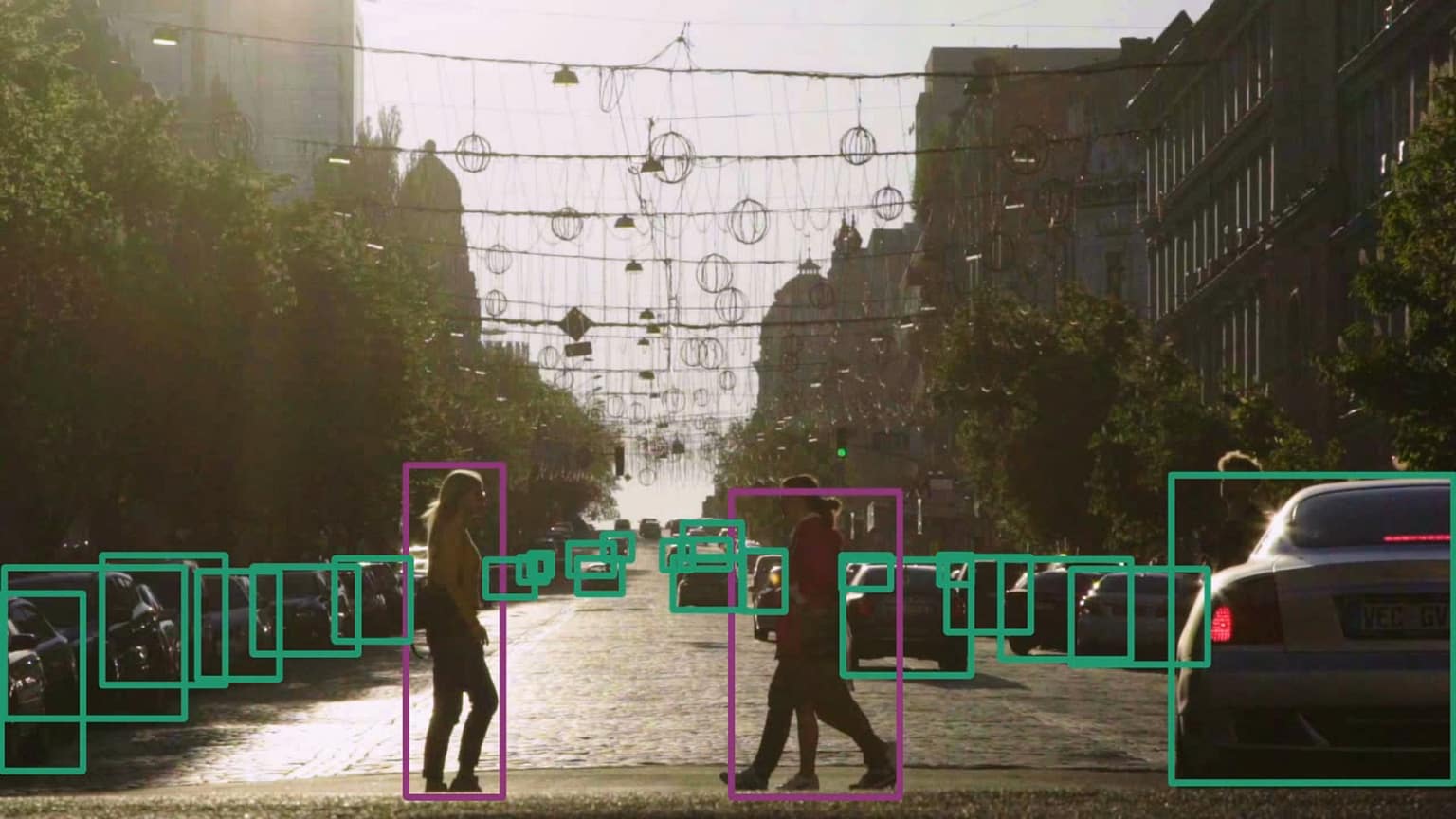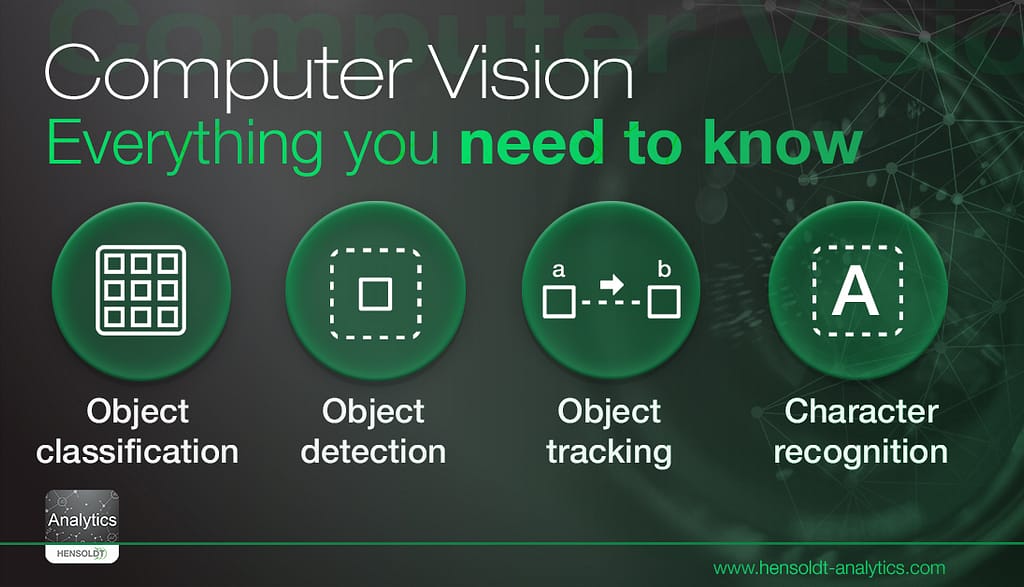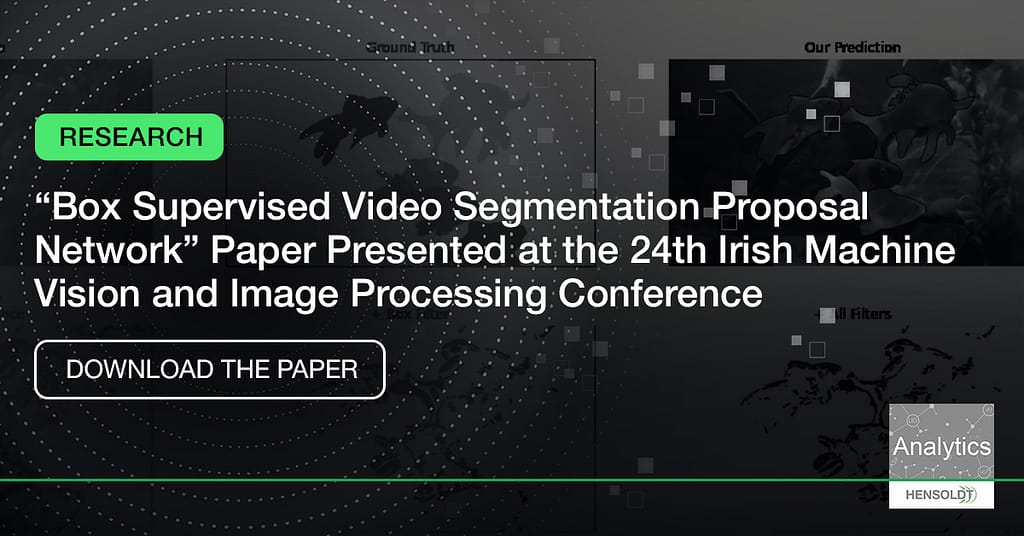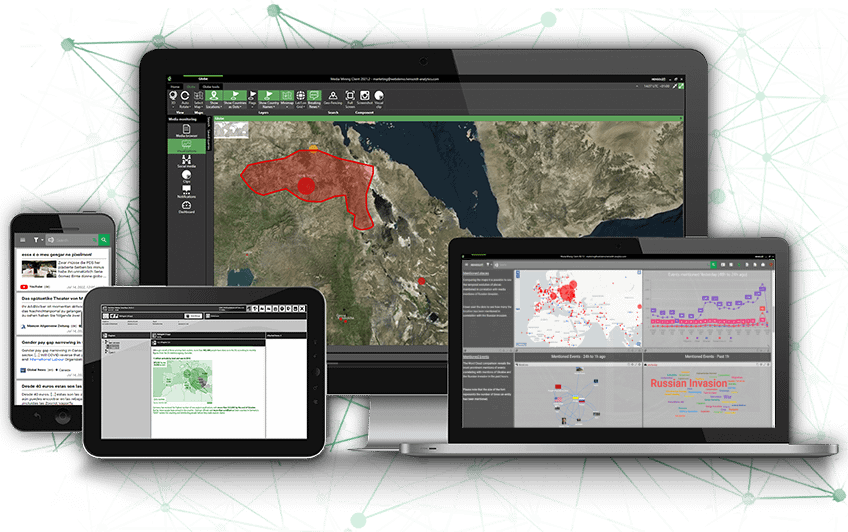Human vision is one of the most magnificent biological wonders our bodies are capable of, and our ability to detect and decipher images into information is such a vital and unique function. Computer scientists have been working since the 1950s to create artificial intelligence that can mimic the way we compute visual data. Since 1959, computer vision capabilities, such as object detection, classification and tracking (ODCT), has made leaps and bounds to catch up to the human eye. However, there’s still plenty more to uncover in the field. In this article, we’ll explore the basics of computer vision as well as object detection, classification and tracking (ODCT) and the benefits and challenges of both.

Table of Contents
What is computer vision?
Firstly, computer vision (CV) is a field of artificial intelligence (AI) that enables computers to interpret and understand information from digital images, videos and other visual elements to make decisions and recommendations as a human might.
Capabilities of computer vision include object classification, object detection, object tracking and optical character recognition.

Object detection
A computer vision technique of detecting an object of interest in a video

Object classification
A computer vision technique of assigning a unique identification (ID) for each object in an image of video

Object tracking
A deep learning process where an algorithm tracks the movement of an object

Optical Character Recognition
The identification and conversion of images to machine-encoded text
Using the three of the four capabilities above, we at HENSOLDT Analytics have created a solution called Object Detection, Classification and Tracking (ODCT). Our Head of Machine Learning and Computer Vision, Jonathan Kobold explain the basics of ODCT in the video below:
Object Detection, Tracking and Classification (ODCT) Features

Face Recognition
By using the capabilities mentioned above, face recognition in ODCT identifies and verifies the identity of an individual in photos and videos by using their face. In recent years, the European Parliament has made a strong effort to regulate facial recognition in the EU. While there are benefits to using face recognition and biometric data for the purpose of public safety and security, it can and is argued that this information encroaches on citizens right to privacy and jeopardizes protection against discrimination.

Logo Recognition
Not seen to be as intrusive as face recognition, logo detection identifies popular branding within an image. As brands give context to day-to-day life, logo recognition helps give a holistic picture of current major players in our lives.

Metadata Analysis

Reverse Search Image
Reverse image search is a popular tool used by many platforms nowadays. Essentially, reverse image search allows someone to upload an image and conduct a search for duplicate or similar imagery online.
Computer Vision and Object Detection, Tracking and Classification (ODCT) Use Cases
There is a high demand for object detection, tracking and classification methods for vehicle traffic control systems, surveillance systems for detecting unauthorized movements, mobile robot applications, and animal tracking. In the security and defence area, these methods can be used for:
- Area surveillance
- Automatic alarms
- Target detection
- Multiple object detection – the tracking algorithm tracks every single object of interest in the video
- Autonomous Flight control of unmanned air vehicles (UAVs) – surveillance, detection, and capture of drones
Learn more about how these areas benefit from computer vision and ODCT with our AI Engineer Vishal Mhasawade:
Benefits of Computer Vision in Open-Source Intelligence
Automation

The first and most beneficial value of computer vision is the ability to reduce time needed for simple tasks and processes. Currently, the manual labour that would be needed by an individual to classify, detect and track objects in images and videos would take hours upon hours… if not days even.
Cost Efficiency

When a system is trained well, not only is the solution time-efficient, but it can also save companies and agencies exponentially when it comes to monetary investment. For all the time saved by automation efforts, analysts can use their skills to focus on less mundane and monotonous tasks at hand.
By having computer vision and ODCT integrated in open-source intelligence, analysts can not only monitor and report on written words, but also images and videos as well for a holistic view of situational awareness.
Challenges of Computer Vision in Open-Source Intelligence
The Gap Between Human Vision and AI
As with any type of artificial intelligence, computers are not as sophisticated as humans… yet. This holds especially true for computer vision and ODCT. However, human eyesight and vision are intricate biological structures that computer science still has much work to uncover. With teams like ours at HENSOLDT Analytics, we have some of the greatest experts in the field constantly seeking to improve our systems. For example, you can read one of the latest research papers from our team, which was presented at the 24th Irish Machine Vision and Image Processing Conference.
Training Resources
In general, a common challenge with artificial intelligence is the need for training the system. For many, not having the resources to train means not fully taking advantage of the tool itself. When artificial intelligence is not fully trained, analysts can then get false positives, which skews the data and makes it unreliable.
In the corresponding video, Kobold explains more about false positives and the data sets needed when training artificial intelligence:
Lack of Personnel
Additionally to challenge number 2, in order to train a system, specialists are needed. Unfortunately, at this point in time, there aren’t enough specialists to compute the millions of images and videos that already exist. With each passing hour and minute, many more media are created and uploaded.
Conclusion
Ultimately, while the workload may be heavy in the beginning, the return on investment in using computer vision in open-source intelligence can reduce overall efforts for teams. Secondly, computer vision provides a holistic overview to situational awareness that manual labour could never compete against. Solutions like Object Detection, Classification and Tracking (ODCT), which we offer at HENSOLDT Analytics, can help analysts do the following:
- Face recognition
- Logo recognition
- Object detection
- Reverse image search
- Metadata analysis
Request a Webdemo Account
If you are interested in discovering the demo version of HENSOLDT Analytics, please fill in the form.
Take a look at our Privacy Policy.
You can change your mind at any time by clicking the unsubscribe in the footer of any email you receive from us, or by contacting data protection officer.
Please find out about your rights and choices and how we use your information in our Privacy Policy and Cookie Policy.






